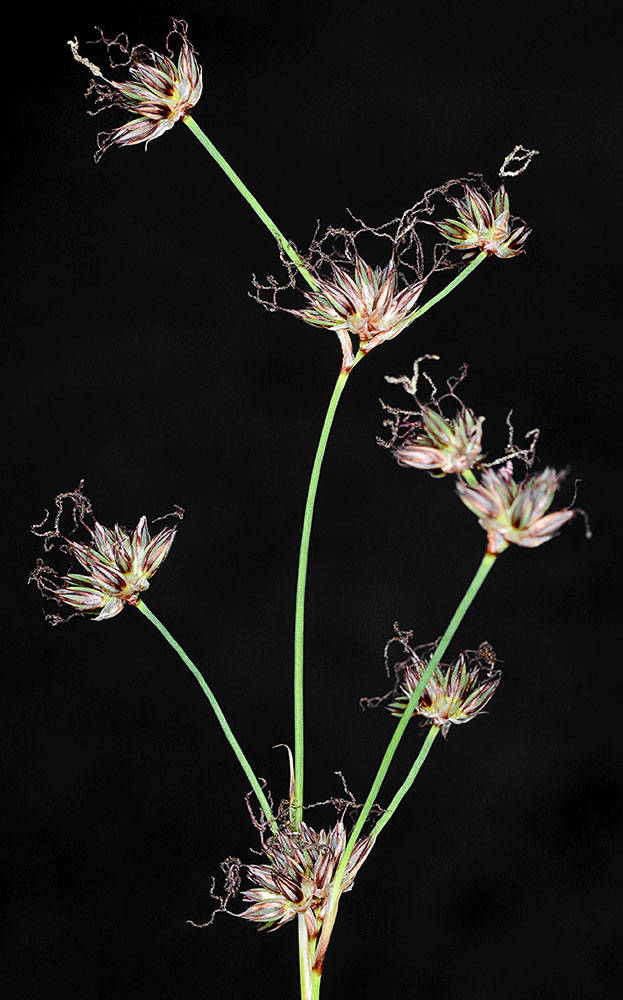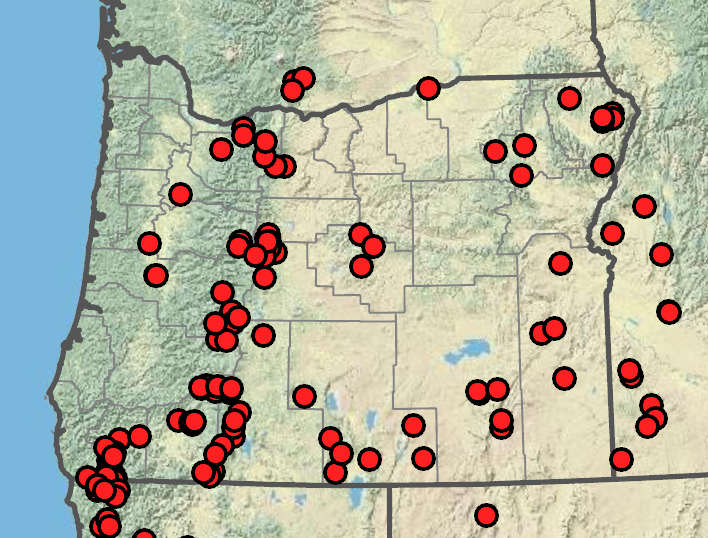Juncus orthophyllus
straight-leaved rush
flat; grass-like;
auricles absent or inconspicuous, usually acute, 0–0.6 mm.
3–12 clusters or head-like clusters; clusters 4–10-flowered.
tepals 6, 5–6 × 1–1.4 mm; greenish brown, brown to dark brown, papillose;
stamens 6;
filaments 0.4–0.8(1) mm;
anthers 1.6– 2.8 mm;
styles 1.3–2.5 mm.
oblong-ovoid, obtuse or truncate; shorter than the tepals, brown, 3-chambered.
0.5–0.7 × 0.2–0.25 mm, reticulate, apiculate; tails less than 0.2 mm.
=40.
Juncus orthophyllus
Floodplains, wet meadows, marshes, wet prairie, springs, ditches, serpentine wetlands. 300–1900m. BR, BW, Casc, Col, ECas, Owy, Sisk, WV. CA, NV, ID, WA; east to MT. Native.
This species is often confused with J. longistylis, which has prominent long auricles; J. orthophyllus auricles are inconspicuous or absent. Many reports from the southern Cascades are misidentifications of J. howellii, which grows at higher elevations and has more elongated tails on the seeds.
Peter Zika
- Local floras:
CA,
OR,
WA
- Local Web sites:
CalFlora,
CalPhotos,
Flora NW,
PNW Herbaria
WildflowerSearch
iNaturalist (observations)
USDA Plants Database
- LBJ Wildflower Center
- SEINet
- Plants of the World Online
- Encyclopedia of Life
- Wikipedia
- Google Image Search

